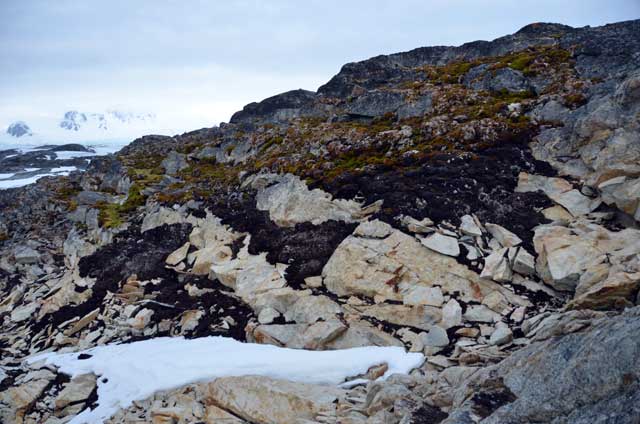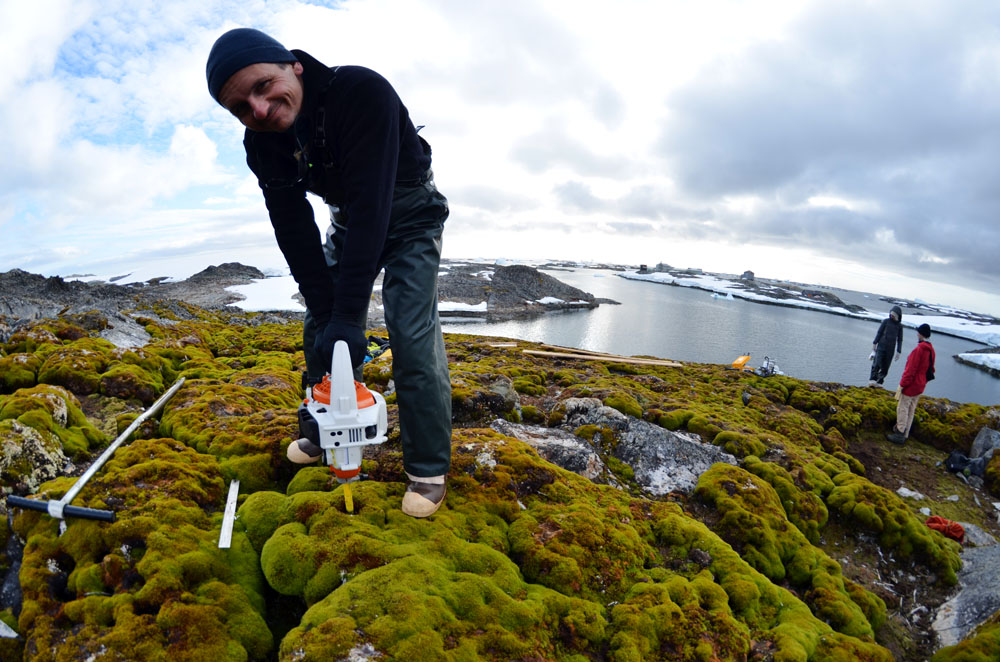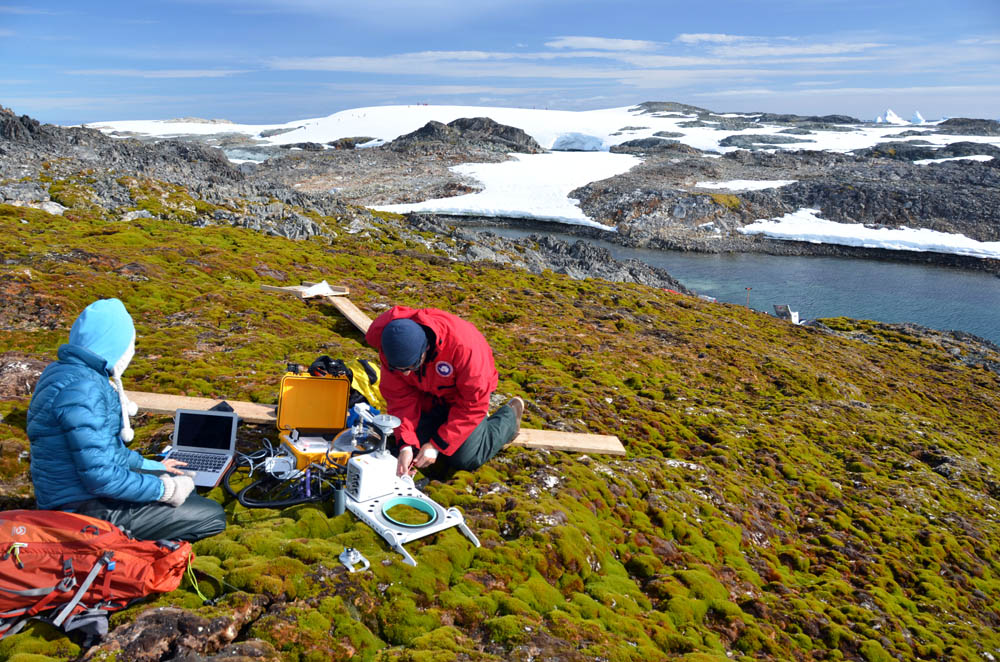Rolling stone gathers no mossBut peatbanks around the Antarctic Peninsula tell the story of a region in transitionPosted July 3, 2014
The expression “the grass is always greener on the other side” has taken on a more literal meaning for researchers studying peat-forming mosses on islands off the west coast of the Antarctic Peninsula. Zicheng Yu The researchers found not only signs that moss species composition may be changing as the current climate grows warmer and wetter, but they also discovered evidence that such plants may have flourished nearly a millennium ago during another period of higher temperatures before slipping back into a colder climate. “We’re seeing how peat-forming moss would respond to a warmer climate,” Yu said, explaining the fieldwork conducted by his team near U.S. Antarctic Program’s Palmer Station More than 99 percent of Antarctica is covered by ice, so there is little real estate for plants to grow. In fact, there are only two species of flowering plants, Antarctic hair grass (Deschampsia antarctica) and Antarctic pearlwort (Colobanthus quitensis). Most of the vegetation – found on the more northerly islands off the western Antarctic Peninsula – consists of several hundred species of so-called lower plant groups such as mosses, lichens and fungi. And then there are really only two dominant peat-forming mosses – mosses associated with deposits of decaying organic matter – Polytrichum strictum and Chorisodontium aciphyllum. The former is a yellowish-looking turf moss that favors drier conditions, while the latter shines a wet bright green. Yu said his team is investigating a hypothesis that conditions along the Antarctic Peninsula are favoring the wetter species over the drier one, possibly due to increases in precipitation or longer snowmelt seasons during the summer when the moss grows. The Antarctic Peninsula is one of the fastest warming regions on the planet. The average temperature has increased by about 0.5 degrees Celsius per decade since the 1950s. Winter sea ice duration has shortened by an average of three months per year. Scientists have reported penguin eggs drowning in snowmelt during particularly warm seasons. Yu and his colleagues, including co-principal investigator David Beilman Such paleoclimate reconstructions used by the team rely on comparing ratios of stable isotopes of oxygen and hydrogen, which vary depending on environmental conditions of the time. Radiocarbon dating techniques are used to provide an age for the plant material recovered in the cores. Information gleaned from the isotopic analyses can include a record in changes not only of temperature but in atmospheric circulation and ocean conditions, according to Yu. The researchers are particularly interested in a time period that occurred about 800 years ago called the Medieval Warm Period, or Medieval Climate Anomaly, when temperatures were comparable to today, before the so-called Little Ice Age cooled the planet down for the next few centuries. 
Photo Credit: Zicheng Yu
Black entombed moss, actually intact moss peatbank ecosystems, re-exposed recently after the retreat of ice and permanent snow on Galindez Island.
Examination of the plant material from the cores should also provide data on changes in species composition and growth rates through the centuries. Some of the most intriguing samples of peat-forming moss collected by the researchers came not from living plants but from moss that until very recently had been entombed by glaciers. The retreat of the ice turned up samples that may have only been exposed for a day or two, according to Yu. “We made some very interesting observations [on entombed moss] around the ice margin,” he said. “It was still fresh looking, with a brown color, and then right away it turned black when oxidized.” The hardiness of high-latitude mosses has been newsworthy in recent months. Late last year, a team of Canadian researchers found what appeared to be moss regenerating on Ellsmere Island as the ice retreated there. The plant material was dated to about 400 years ago, to the time of the Little Ice Age. More recently, a group of scientists led by the British Antarctic Survey Of course, it’s not just the past that Yu and his colleagues are interested in understanding, but how the Antarctic Peninsula may change in the future. 
Photo Credit: Zicheng Yu
Peatlands (two basins on center left) and moss peatbanks (foreground) on mainland Antarctic Peninsula near Rasmussen Hut.
And there are hints that the future may have already arrived. “In the field, we observed some ecosystems like a peatland,” Yu said. Peatlands are a type of wetland normally associated with a high water table. A peat bog, for example, is a type of peatland that is wet and spongy. Peatlands are also major reservoirs of carbon. The suspected peatlands, found on Galindez Island where Vernadsky is located, and nearby mainland Antarctic Peninsula, either may be the result of a full-blown ecosystem change or may represent the early stages of regeneration of old eroded peatbanks that became entombed during the Little Ice Age. “In either case, this ecosystem change is likely responding to recent climate warming,” Yu said. “A new ecosystem type will form sooner or later. If not now, it will happen in the future with the continuing warming climate. It may be happening now.” NSF-funded research in this article: Zicheng Yu, Lehigh University, Award No. 1246190 |



For USAP Participants |
For The Public |
For Researchers and EducatorsContact UsU.S. National Science FoundationOffice of Polar Programs Geosciences Directorate 2415 Eisenhower Avenue, Suite W7100 Alexandria, VA 22314 Sign up for the NSF Office of Polar Programs newsletter and events. Feedback Form |




